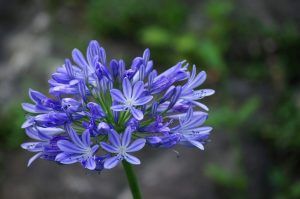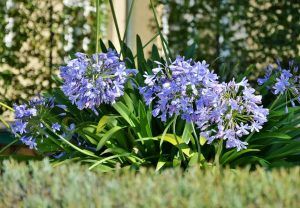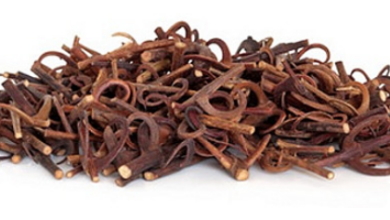Agapanto: [Cultivation, Irrigation, Care, Pests and Diseases]

 Agapanthus are plants of numerous species that belong to the Agapanthoideae family, coming from areas with winter rains, in southern Africa.
Agapanthus are plants of numerous species that belong to the Agapanthoideae family, coming from areas with winter rains, in southern Africa.
They are easily identified by their numerous flowers grouped in an open inflorescence shaped like an umbrella or umbel.
The genus Agapanthus has been the subject of debate since its creation in 1788. Although all the species have a similar shape, specialists have difficulty classifying them and including them in certain families.
Due to such difficulties, numerous specimens have been simplified and grouped into 6 species and subspecies. However, of all these specimens, the Agapanthus praecox is the most cultivated of all the Agapanthus species.
Important points when planting agapanthus:
- Scientific name: Agapanthus.
- Common name: Agapanthus, lily, blue tuberose, flower of love.
- Height: 1 to 1.5 meters.
- Light requirement: Direct light and partial shade.
- Temperature: temperate zones (+8ºC).
- Irrigation: Moderate.
- Fertilizer: Organicfertilizer.
What characteristics does agapanthus have?
Agapanthus, also known as flower of love, are perennial, rhizomatous and robust herbs, which normally measure from 0.4 to 1.5 meters in height, reaching even 1.8 meters .
Its roots are fleshy, not tuberous or bulbous; its rhizomes, or underground roots, are branched and tuberous. The stems have 7 to 20 leaves per plant, basal, alternate and narrow, which can measure between 20 to 70 centimeters long.

During the summer the agapanthus produces leafy umbels of blue, white or lilac flowers from 10 to 50 centimeters in diameter. Each inflorescence is composed of a large number of individual flowers, from 10 to 150 depending on the species.
The fruit is a berry 5 centimeters in diameter which contains flat, elongated, black and smooth seeds inside its three lobes.
When to sow agapanthus?
Agapanthus can be grown from seed starting in spring and during the months of June, July and August, just when the risk of cold and frost has disappeared.
When it comes to division cultivation, perennial species should be sown in early March, when the end of the flowering period occurs. If they are deciduous, they should be divided in late winter or early spring, when active growth is just beginning.
Where to plant agapanthus?
 To sow the agapanthus it is recommended to do it in temperate zones, with temperatures that are in a range between 10ºC to 21ºC.
To sow the agapanthus it is recommended to do it in temperate zones, with temperatures that are in a range between 10ºC to 21ºC.
There are other species, such as Agapanthus praecox, that resist temperatures down to -8ºC.
If the agapanthus is planted in cold or temperate climates, it is necessary to locate it in a place where it receives direct solar radiation, or at least for a few hours in the morning, especially in spring and summer.
In hot climates it is recommended to keep them in the shade, since temperatures above 20ºC cause growth retardation, in addition to burning the leaves and discoloring the flowers.
How to prepare the land?
Agapanthus can be planted in poor soils, either acid or alkaline, but well drained, with a good capacity to retain moisture during the summer. However, if better results are desired, it will grow best in fertile soils, with a pH between 5.8 to 6.3.
If you plan to plant agapanthus in a pot, it is advisable to make a mixture with a part of leaf soil, a part of peat, a part of sand or perlite and 2 to 4 kg of lime per kg of mixture.

If the soil is acid, neutralization can be carried out with the application of lime for a period of two months before cultivating it. It is also recommended to prepare the soil with phosphorus and potassium, especially during the planting phase.

How do we water the agapanthus?
Agapanthus plants grow much better in moist soil. That is why they must be watered naturally or artificially abundantly during the period of growth and flowering, without saturating the soil.
How often do we water the agapanthus?
The frequency of irrigation will depend on the evapotranspiration of the plants and the vegetative period. In the case of garden agapanthus, they can be watered once a week during the summer and less during the winter.

In the case of pots, they can be watered 2 or 3 times a week during the summer and less frequently during the winter to keep the substrate slightly dry.
How to plant an agapanthus step by step?
There are three ways to grow agapanthus: by seed, by division, and by tissue culture. However, it is multiplied more successfully by the division method, since the juvenile phase of the plant is eliminated and the time for flower production is shortened.
Below are the most popular methods.
By Seed
- Place the agapanthus seeds in a container and cover them finely with a substrate made up of sand and fine compost.
- Moisten with a spray bottle of water and place the container in semi-shade.
- Wait 3 to 8 weeks for the seeds to germinate.
- Transplant into the ground or individual pots after a year.
by division
- Prepare the mother plant by reducing the foliage to half and the stems to two-thirds their size, leaving a shoot to develop later.
- Transplant the sections into the ground in shallow holes, 2.5 to 5 centimeters. The tuberous stems should hardly be covered by the substrate.
- Place the sections at a distance of 15 to 40 centimeters from each other, depending on the size of the plant.
- Water abundantly until the appearance of the first shoots.
What care does the agapanthus need?
The agapanthus is a very resistant plant and generally does not require extreme care. However, care must be taken when handling the plants, because when they are exposed, the viruses can be introduced through the roots. If there are diseased plants, they must be eliminated to avoid contagion.

What pests and diseases affect agapanthus?
In humid climates, agapanthus can be affected by gray mold (Botrytis cinerea), by the fungus Macrophoma agapanthus, or by Powdery Mildew.

On the other hand, if there is saturation in the agapanthus substrate, it is very likely that the pathogens Rhizoctonia solani, Phythium ultimum, Phytophthora cactorum, Fusarium oxysporum will appear; mites such as the red spider (Tetranychus urticae Koch), or the bulb mite (Rhizoglyphus echinopus), among others.
References
- http://cybertesis.uach.cl/tesis/uach/2004/fav648e/pdf/fav648e.pdf
- https://www.researchgate.net/profile/Gustavo-Delucchi/publication/262911519_Flora_Rioplatense_34_Agapanthaceae/links/0deec5392303f312b4000000/Flora-Rioplatense-34-Agapanthaceae.pdf
- http://revista.macn.gov.ar/ojs/index.php/RevMus/article/viewFile/301/285
- https://www.sciencedirect.com/science/article/pii/S0254629913000239
- https://www.pueblacapital.gob.mx/images/transparencia/obl/01marco/mun/linea.ambientales.anexo.pdf
- https://en.wikipedia.org/wiki/Agapanthoideae
- https://guiadejardin.com/agapantos-como-cultivar/
- https://www.gardenguides.com/102631-agapanthus-diseases.html



![Photo of Sow Bugs (Porcellio scaber): [Characteristics, Detection, Effects and Treatment]](https://www.complete-gardening.com/wp-content/uploads/2022/08/sow-bugs-porcellio-scaber-characteristics-detection-effects-and-treatment-278x220.jpg)
